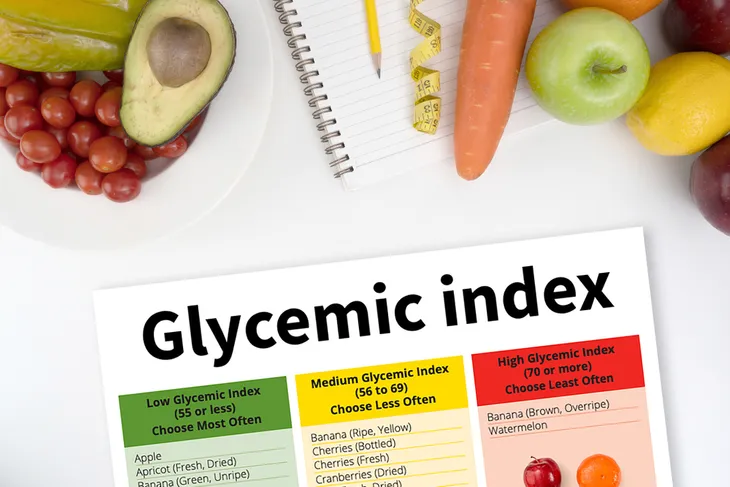Prediabetes is a health condition someone is diagnosed with before it progresses to type 2 diabetes. This is when sugar levels are high, but not high enough for it to be type 2 diabetes. Out of the 88 million American adults that have prediabetes, 84-percent don’t even know they have it. It’s important for people to do everything they can to prevent worsening their health and progressing to type 2 diabetes. You can find out which lifestyle choices are linked to prediabetes by searching online.
There are certain foods that can help keep your blood sugar levels low. Start an online search to discover foods and recipes prediabetics can start incorporating into their daily routine.
Here’s what you should know about managing prediabetes.
Want diabetes content delivered straight to your inbox? Sign up for our Diabetes newsletter and receive exclusive news and articles written from our team of diabetes experts.
What is the Glycemic Index?
It’s important for people with prediabetes to determine how certain foods will impact your blood sugar. To do this, you will have to find out where it falls on the glycemic index (GI).
The higher a food falls on the GI scale, the faster your blood sugar will rise. This includes foods that are processed, refined, and lacking in fiber and nutrients. The lower a food falls on the GI scale, the less your blood sugar will spike. Foods with high fiber have a lower rank. (You should also check out Foods That Can Help You Manage Diabetes).
Some foods that are lower on the GI spectrum are:
- Steel-cut oats
- Stone-ground whole wheat bread
- Non-starchy vegetables (ex. carrots and field greens)
- Beans
- Sweet potatoes
- Corn
- Whole wheat pasta
Refined carbohydrates such as white bread, russet potatoes, white rice, and juice should be limited because they are ranked high on the GI index. There are also foods that fall somewhere in the middle, like whole wheat bread and brown rice.
Avoiding foods that are higher on the GI spectrum is one of the best ways to manage your blood sugar. You can search online for prediabetic-friendly recipes and ingredients to start incorporating into your daily meals.
Prediabetes Risk Factors
There are a number of things that increase your risk factor for prediabetes, such as family history and having certain conditions. It can occur in people of any age but the risk increases after the age of 45. Some of these health-related risk factors include:
- Obesity, especially abdominal obesity
- High blood pressure
- High blood fat levels
- Low levels of “good” high-density lipoprotein (HDL) cholesterol
- Polycystic ovary syndrome (PCOS)
Lifestyle choices also play a big factor in prediabetes diagnosis. In fact, About nine in 10 cases of prediabetes and type 2 diabetes are preventable.
- Lack of exercise
- High stress levels
- Smoking
- Drinking too much alcohol
- Regularly consuming high-sugar drinks
By consuming a healthy diet, getting regular exercise, and managing your stress levels, you can manage your prediabetes. Doing this can prevent or delay a type 2 diabetes diagnosis, which is significantly more serious and harder to live with than prediabetes.
Other Ways to Manage Prediabetes
As important as diet is when you have prediabetes, it takes a combination of lifestyle changes to prevent it from progressing to type 2 diabetes. Here are three more things you should do to manage your condition.
Lose Weight
Being overweight is a contributor to developing type 2 diabetes. Even a small amount of weight loss can make a positive difference in your health. Just make sure to talk to your doctor about what a healthy amount of weight loss would be for your body.
Get Regular Exercise
Exercising just 30 minutes a day for five days a week can do wonders for your health. It doesn’t have to be too intensive either. You can go for a brisk walk, bike ride, swimming, yoga, or another activity you might enjoy. (Check out these Exercise Tips for Diabetes).
Quit Smoking and Limit Drinking
Those who drink greater amounts of alcohol risk causing chronic inflammation of the pancreas, which can prevent it from secreting the hormone that regulates glucose in the blood. Tobacco use can also increase blood sugar levels and lead to resistance. The best thing you can do is limit your alcohol consumption and quit smoking altogether.
Learn More About Prediabetes Today
Prediabetes is a warning sign that your blood sugar levels are getting too high. If left unmanaged, you could end up getting diagnosed with type 2 diabetes. There is no cure for type 2 diabetes, but people who are still in the prediabies stage still have the ability to make changes and prevent getting your blood sugar levels to that point.
Controlling your diet and eating foods that rank lower on the GI index is essential. It indicates whether an ingredient will raise your blood sugar, which is something people with prediabetes needs to avoid. Eating healthy, regularly exercising, and avoiding things like tobacco and alcohol will lower your risk factor.
Talk to your doctor if you’re at risk of being prediabetic. Search online to learn more about this common condition and how to manage it.









